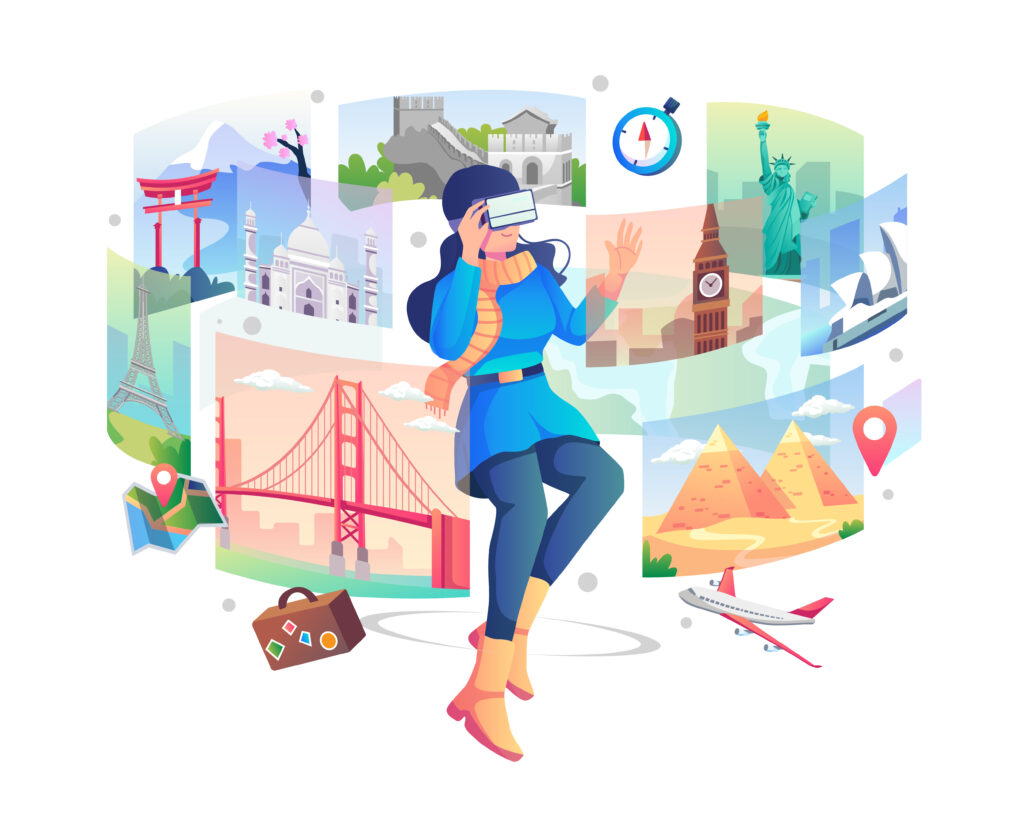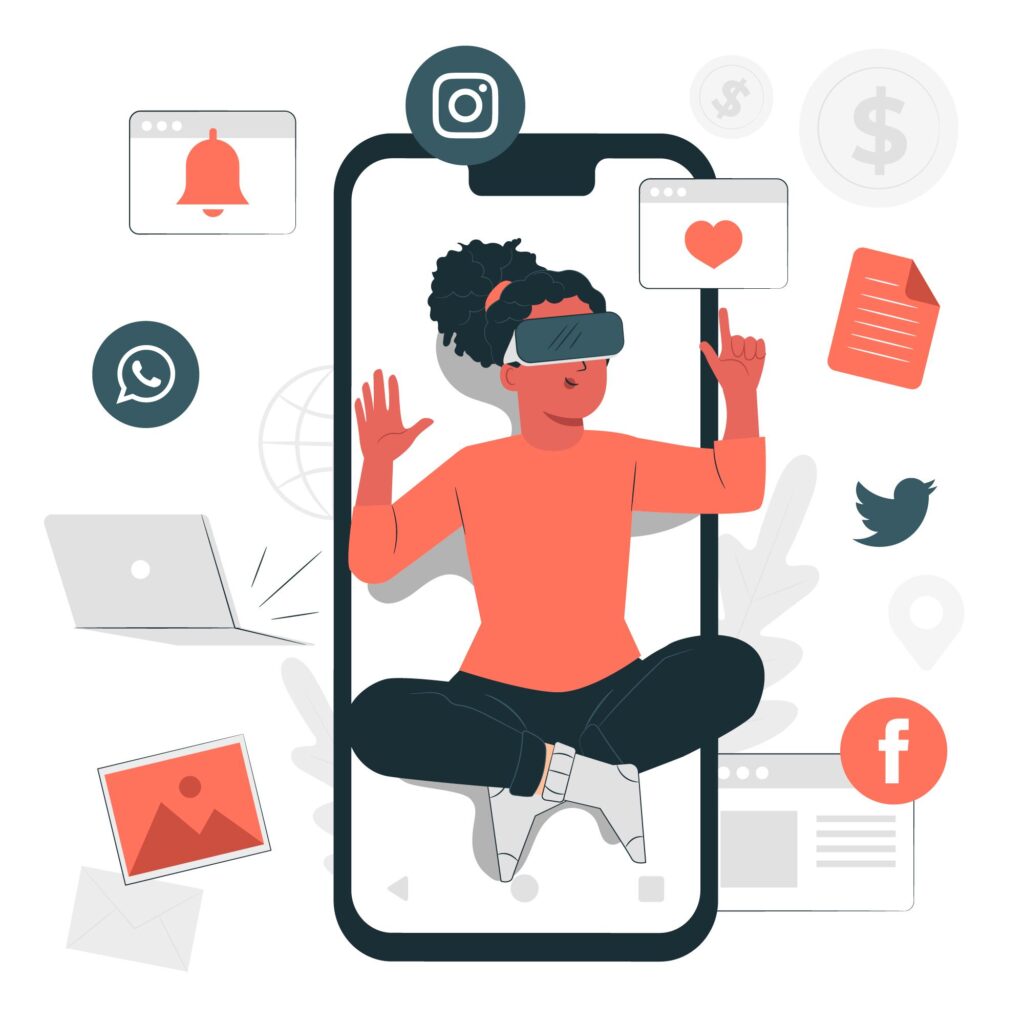Investing in 360-Degree Tours: Why It’s a Good Idea and How to Begin
In today’s digital-first world, a 360 virtual tour offers an immersive experience far beyond traditional static images, providing a comprehensive view that captures the intricacies of a space. As real estate continues to integrate advanced technology, 360 virtual tours emerge as a revolutionary tool, allowing potential buyers to navigate properties virtually, thereby streamlining their decision-making process. With reports indicating that a vast majority of buyers rely on online resources during their home search, incorporating a 360 tour into a real estate marketing strategy is becoming increasingly essential.
Recognizing the growing demand for virtual reality tours, the article delves into the importance of investing in 360 virtual tours and the practical steps to getting started. While only a fraction of firms currently exploit this technology, those who do can attest to its effectiveness in enhancing online presence and bolstering local SEO. The article will outline the benefits of 360 tours, essential tools and software for creation, compare professional versus DIY approaches, and provide insights on how to leverage such tours for maximum impact, ensuring real estate companies can capture the attention of the modern buyer.

The Evolution of 360 Virtual Tours
The journey of 360 virtual tours dates back to the late 1800s with panoramic photography, an innovation that laid the groundwork for today’s immersive visual experiences. These early panoramas were often showcased in circular buildings known as rotundas, with the Panorama Mesdag in The Hague being a notable example. Fast forward to the early 1990s, NASA took a significant leap in virtual tour technology by creating a 360-degree panorama of the Space Shuttle Endeavour using stitched black-and-white photos. This marked the inception of the modern virtual tour.
As the 2000s dawned, the sophistication of virtual tours grew thanks to advancements in stereoscopic View-Masters and burgeoning computer technology. The evolution continued with the introduction of 360-degree cameras, augmented reality (AR), virtual reality (VR), and cloud platforms, all contributing to the enhanced capabilities of virtual tours. Industries such as real estate, tourism, education, and entertainment quickly recognized the value of these tools, capitalizing on their ability to provide immersive experiences that simulate physical presence.
Key milestones in the evolution of virtual tours include:
- 2008: The first immersive Van Gogh exhibit offered a virtual tour of the artist’s work, setting a precedent for the use of virtual tours in art exhibitions.
- Modern 3DVT Technology: Combining 3D models with 2D panoramic images, modern virtual tours simulate the experience of moving through real spaces, enhancing the user’s sensory experience without the need for physical travel.
- Impact on Business: Incorporation of custom 3D modeling services in virtual tours has been shown to increase business revenue by up to 20%, demonstrating significant financial benefits.
- The Future: With ongoing advancements in hardware and software, future 360 virtual tours promise even more immersive experiences, interactive elements, collaborative opportunities, and increased personalization and accessibility.
The progression of 360 virtual tours reflects a remarkable blend of artistic innovation and technological advancement, leading to today’s dynamic and interactive experiences that continue to revolutionize how people interact with environments remotely.

Benefits of Integrating 360 Virtual Tours
Integrating 360 virtual tours into a business’s marketing strategy offers a myriad of benefits that extend far beyond traditional photographic displays. Here are some of the key advantages:
- Enhanced Engagement: Properties with 360 virtual tours generate substantially more interest, receiving up to 10 times more website views and clicks than those without such immersive features. This increased engagement is a testament to the compelling nature of virtual reality tours.
- Cost-Effective Marketing: By providing a virtual representation of a space, businesses can significantly reduce the need for physical demonstrations, saving on travel and other related expenses. Additionally, a virtual tour serves as a long-lasting marketing asset, offering a high return on investment.
- Global Accessibility: The around-the-clock availability of virtual tours caters to customers across various time zones, allowing them to explore spaces at their convenience, thus broadening the potential customer base.
The impact of 360 virtual tours on consumer behavior is profound, with several key points to consider:
- Immersive Experience: Customers can explore a business from any angle, providing them with a thorough understanding of what is offered, which can save them both time and money.
- Visual Information: Virtual tours offer a wealth of visual details, including a look at facilities, photo galleries, and contact information, all of which contribute to an enhanced user experience.
- Influencing Decisions: The abundance of information available through virtual tours enables consumers to quickly gauge their interest, positively influencing their buying behavior.
Lastly, the strategic advantages of 360 virtual tours for businesses are clear:
- SEO and Online Presence: Businesses with 360 virtual tours see an increase in their online visibility, improving their search engine optimization and the likelihood of being discovered by potential customers.
- Customization and Branding: Virtual tours can be tailored with additional features and content, making them more informative and reflective of the brand’s identity.
- Safety and Convenience: In a world where remote access is increasingly important, virtual tours allow businesses to showcase their offerings safely from a distance, bridging gaps across time zones and reducing additional promotional expenses.

Key Equipment and Software for DIY 360 Virtual Tours
Embarking on the creation of a DIY 360 virtual tour begins with selecting the right equipment and software. The cornerstone of this process is the 360 camera, with the Ricoh Theta V being a popular choice due to its balance of quality and affordability, typically priced between $370-380. For those considering different models, options such as the Ricoh Theta Z1, Insta360° ONE X, Ricoh Theta SC, Xiaomi Mi Sphere, and Madv360° also merit attention for their unique features and price points.
To ensure the camera captures clear and stable images, a tripod or monopod is indispensable. For extended shooting sessions, such as multiple properties in real estate, the Ricoh Theta Extension is a valuable addition to prolong battery life. After capturing the images, software from the camera manufacturer is usually required for operation and viewing. Free options like Go Pro and Ricoh offer basic functionality, while services like BoxBrownie.com enhance and stage 360 images for a professional finish.
For those looking to share their virtual tours quickly, social media platforms like Facebook and YouTube support 360 files, offering a direct route to immersive experience sharing. Dedicated virtual tour providers facilitate the uploading of 360 images to craft the tours. For a fully immersive creation and viewing experience, VR headsets such as Oculus Rift, HTC Vive, and PlayStation VR are essential.
The following points highlight the key equipment and software for DIY 360 virtual tours:
Cameras:
- Ricoh Theta V: Affordable and user-friendly, ideal for beginners.
- Additional Options: Ricoh Theta Z1, Insta360° ONE X, and others for varied needs.
Stability Tools:
- A sturdy tripod or monopod: Essential for preventing camera shake and ensuring sharp images.
- Ricoh Theta Extension: Extends battery life for longer shoots.
Software and Viewing:
- Manufacturer’s Software: Necessary for camera operation and basic image viewing.
- Free Viewing Software: Go Pro and Ricoh for computer-based viewing.
- BoxBrownie.com: Offers professional 360 image enhancement and virtual staging.
- VR Headsets: Oculus Rift, HTC Vive for an immersive VR tour experience.
Uploading and Sharing:
- Social Media Platforms: Facebook and YouTube for quick sharing.
- Virtual Tour Providers: Allow for uploading and creating detailed virtual tours.
In summary, a powerful computer to process large files, specialized software like Unity or Unreal Engine for interactive content, 3D audio microphones for lifelike sound, and proper lighting to avoid image stitching issues are also critical components of a successful DIY 360 virtual tour setup.

Step-by-Step Guide to Creating Your First 360 Virtual Tour
Embarking on the creation of your first 360 virtual tour involves a series of steps, ensuring each room is showcased in the best light. Begin by deciding on the tour’s format; a video walk-through or an interactive 360-degree experience can offer unique perspectives for viewers. A dedicated 360-degree camera or a camera rig with a fisheye lens is essential, along with a tripod and a panoramic tripod head to capture the full scope of each space.
Preparation and Shooting:
- Room List: Create a comprehensive list of all rooms to be featured, planning the camera’s placement to capture the essence of each space.
- Staging: Clean and arrange each room for optimal visual impact, removing clutter to highlight key features.
- Leveling: Secure the tripod and employ a bubble level or smartphone tool to ensure the camera remains stable and level during shooting.
- Test Shots: Conduct test photographs to fine-tune camera settings and room arrangements, adjusting as needed for the best results.
Post-Production:
- Image Upload: Transfer your images to a chosen software platform, where you can add interactive elements such as audio or informational links.
- Virtual Tour Creation: Utilize tools like Google Tour Creator or CloudPano, following their steps to organize your photos and build the virtual tour.
- Image Stitching: For a seamless panorama, software like PTGui or Adobe Photoshop can combine individual images into a 360-degree view.
Sharing Your Tour:
- Hosting Platforms: Select a virtual tour platform like Kuula or Matterport to host and display your tour.
- Promotion: Integrate the 360 virtual tour into your website, share across social media channels, and include in your real estate newsletter to reach a wider audience.
Each step, from planning to sharing, is critical in creating a 360 virtual tour that captivates and informs viewers, enhancing your marketing strategy and online presence.

Professional Versus DIY Tours
When considering a 360 virtual tour for real estate or other industries, it’s essential to weigh the pros and cons of professional versus DIY approaches. Here’s a comparison to help guide your decision:
Professional 360 Virtual Tours:
- Image Quality: Generally offer superior image quality and sharpness due to the photographer’s expertise.
- Floor Plan Inclusion: May not always provide a 360-degree or 2D dollhouse floor plan, which are features of immersive 3D tours.
- Cost: The price range for professional services varies. Matterport 3D tours can cost between $100 to $430, while 360 photography ranges from $100 to $400+, not including potential extra fees for videos, floor plans, or aerial shots.
DIY 360 Virtual Tours:
- Process: Involves capturing high-resolution photos with a DSLR camera, ensuring the space is well-prepared, and using software to stitch together the tour.
- Cost Efficiency: Can be significantly less expensive, with virtual tour apps costing from $0 to $180.
- Customization: Allows for more direct control over the final product, which may be beneficial for those with specific visions or constraints.
Choosing the Right Option:
- Needs and Resources: The decision between professional or DIY tours should be based on individual needs, resources, and the desired quality of the final product.
- 3D Data: Professional immersive 3D tours are created from both 2D imagery and 3D data, offering a complete and navigable 3D representation on various devices.
Ultimately, the choice hinges on the balance between budget, quality, and the level of customization required for the 360 virtual tour. Whether opting for a professional service or taking the DIY route, the aim is to create a virtual reality tour that effectively showcases the location and engages potential customers.

Leveraging 360 Tours for Maximum Impact
360 Virtual Tours are transforming the way businesses interact with consumers, offering a visual edge that compels and convinces. Here’s how companies can leverage this technology for maximum impact:
- Global Reach: By incorporating 360 virtual tours, businesses can showcase their spaces to a global audience without the constraints of geographical boundaries. This eliminates the need for travel, saving both the business and the customer time and money.
- Targeted Messaging: Virtual tours allow businesses to craft messages that resonate with their audience. By highlighting specific features or services, companies can tailor their promotional efforts to align with consumer interests.
- Accessibility: With web-based interactive 360 virtual tours, potential buyers can access a property at any time from anywhere, offering convenience and encouraging user engagement.
Statistics underscore the effectiveness of virtual tours in marketing:
- Younger demographics, particularly those aged 18-34, are 130% more likely to book or make a reservation if the business provides a virtual tour.
- Around 50% of adult internet users view virtual tours as a crucial tool in their research and decision-making process.
- Websites featuring virtual tours can see 5-10 times more engagement compared to those without.
- A significant 67% of people express a desire for more businesses to offer virtual tours.
To harness the full potential of 360 virtual tours, businesses should focus on these marketing objectives:
- Enhance brand awareness and reputation.
- Gain a competitive edge.
- Boost audience engagement and customer loyalty.
- Expand into new markets.
- Optimize lead conversions, resulting in increased physical visits, sales, and revenue.
- Improve return on investment (ROI).
By integrating 360 virtual tours into their marketing strategies, businesses can create a more immersive and interactive experience that not only captivates customers but also drives tangible results.

Why Integrate 360 Virtual Tours into Marketing Strategy with helps of our professionals?
Integrating 360 virtual tours into a marketing strategy offers businesses an edge by providing a dynamic and engaging way to present their brand and space. Here’s why incorporating this technology with the help of professionals is a wise move:
Brand Awareness and Competitive Edge:
- Engaging Experience: 360 virtual tours immerse audiences in the space, fostering a deeper understanding of the brand.
- Stand Out: Offers a distinct, interactive experience that sets a business apart from competitors.
Enhanced Engagement and Lead Generation:
- Interactive Content: Allows audiences to explore at their own pace, increasing engagement.
- Lead Conversions: Visitors are more likely to provide information for in-depth content, generating quality leads.
Sales, Revenue, and ROI:
- Natural Decision Making: A closer connection with the brand’s story can lead to increased sales.
- Budget-Friendly: Builds engagement and brand positioning without a high budget.
- Credibility: Transparency through virtual tours builds customer trust.
Professionally created 360 virtual tours can revolutionize a business’s online presence by improving the user experience, increasing response rates, and fostering in-person visits. They are a strategic investment that can boost website traffic, enhance SEO performance, and ultimately, inspire confidence in potential customers.
FAQs
What is the purpose and value of a virtual tour?
A virtual tour serves as an immersive way to showcase properties to potential buyers who cannot visit in person. It uses imagery and video to vividly display a property’s features, offering clients a clear understanding of what they can expect from the property.
What are the key advantages of 360-degree tours?
360-degree tours offer an interactive experience that prompts visitors to explore a venue in detail. This interactivity tends to keep visitors on a website for longer periods, with research showing that sites with 360 tours retain visitors for 5 to 10 times longer than those without.
How much does a 360-degree virtual tour cost?
The starting cost for a Google Business View, which is a 360-degree virtual tour, is around $449. This service allows customers to virtually visit a store at any time of the week, enhancing online visibility and accessibility.
What are some potential drawbacks of virtual tours?
While virtual tours have many benefits, there are some disadvantages to consider, such as the initial investment in equipment and software, a learning curve for creating high-quality tours, possible technical issues, reduced personal interaction, resource intensity, and accessibility concerns.
Can you generate income from virtual tours?
Yes, there are multiple ways to monetize virtual tours. Even when offering virtual tours for free online, revenue can be generated through online advertising programs. Alternatively, virtual tours can be sold as premium content for a profit.
Is there a growing market demand for virtual tours?
The market for virtual tour platforms is expected to grow significantly between 2023 and 2031. As of 2022, the market has been expanding steadily, and with strategic actions by key players, it is projected to continue growing throughout the forecast period.
What does a 360 virtual tour entail?
A 360 virtual tour provides a comprehensive view of a physical space, allowing users to experience the location as if they were physically present. It offers a complete 360-degree by 360-degree perspective, enabling viewers to look in every direction, including up, down, left, and right.


